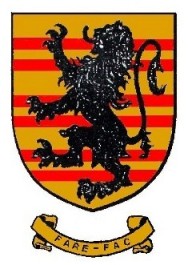|
Fairfax Family - Part 4.
Tom was in agreement with Cromwell and the army leaders in demanding the punishment of Charles, and he was still the effective head of the army. He was placed at the head of the judges who were to try the King, and attended the preliminary sitting of the court. Then, convinced at last that the King's death was intended, he refused to act. In calling over the court, when the crier announced Tom’s name, a lady in the gallery called out that he was not there, that he would never sit among them, and that they did him wrong to name him as a commissioner. This was Tom’s wife, Lady Anne Fairfax, who could not resist, as Bulstrode Whitelocke says “to exclaim aloud against the proceedings of the High Court of Justice.” Anne Fairfax was to bravely stand and interrupt court proceedings several times and was ejected for her pains. She became extremely unpopular in some quarters because of this.
Tom was greatly troubled at the prospect of the execution of King Charles and was approached by a number of others of like mind and some of the Kings supporters in a desperate pleas for help. Tom met with the Council of Officers in an attempt to have the execution postponed. He ruled out any military intervention however. He continued in his attempts right up to the last morning when he spoke to Cromwell and Harrison at length. All was in vain and the King was executed on the 30th January 1649.
Tom was greatly distressed at the execution. His cousin Brian recalls that Tom
“utterly abhorred and lamented the death of the King to his dying day: and never mentioned it but with tears in his eyes.”
He believed that he had been deceived by the likes of Cromwell and Ireton over their true intentions. This was certainly contributed to him resigning his commission sometime later as he was never comfortable in the political arena and became sickened by the whole process and some of the major figures involved .
His last service as commander-in-chief was the suppression of the Leveller mutiny at Burford in May 1649. He had given his consent to the new order of things, and had been re-appointed Lord General but merely administered the affairs of the army.
In 1650, when the Scots had declared for Charles II and the council of state resolved to send an army to Scotland in order to prevent an invasion of England, Tom strongly disapproved and resigned his commission being succeeded by Oliver Cromwell.
He was granted a pension of £5,000 per year by Parliament and retired to his family and Yorkshire estates to resume the quiet life of a country gentleman.

............................................................................................................................................................................................
............................................................................................................................................................................................
|